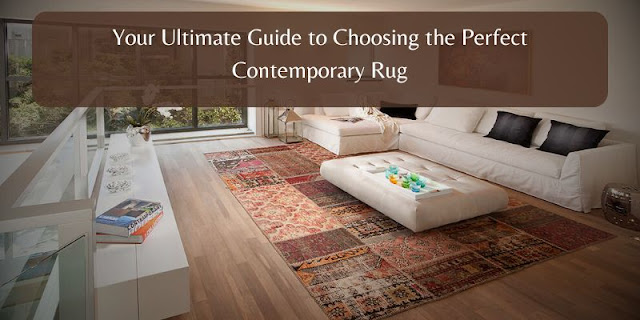Elevating Education: A Touch of Exoticism: Transforming Spaces with Oriental Rugs
Oriental rugs are more than just decorative pieces; they are a fusion of art, history, and craftsmanship, capable of transforming any space into a luxurious and exotic environment. These intricate and timeless designs, rooted in the ancient cultures of the Middle East and Asia, have become symbols of elegance and sophistication. In this blog, we will explore how oriental rugs can elevate the aesthetic appeal of any room, offering a unique blend of tradition, beauty, and functionality.
The Timeless Appeal of Oriental Rugs
The history of oriental rugs dates back thousands of years, originating from regions like Persia, Turkey, India, and China. Each rug is a reflection of the cultural heritage and skilled craftsmanship passed down through generations. The hand-woven designs, intricate patterns, and natural dyes used in oriental rugs make them timeless pieces of art that never go out of style.
What sets oriental apart from other types of rugs is their rich history and deep-rooted traditions. Each region has its unique style, motifs, and weaving techniques, making each rug a one-of-a-kind masterpiece. For example, Persian rugs are renowned for their floral and geometric patterns, while Turkish rugs often feature bold colors and tribal motifs. Incorporating an rug into your home is not just about adding a decorative item; it is about inviting history, culture, and craftsmanship into your space.
Adding Warmth and Character to Any Space
One of the most significant benefits of oriental rugs is their ability to add warmth and character to any room. Whether you’re decorating a modern living room, a traditional dining area, or a minimalist bedroom, an rug can serve as the focal point, tying all the elements of the space together. These rugs come in various sizes, colors, and patterns, allowing for versatility in any design scheme.
For instance, a large rug with rich reds and blues can transform a neutral-toned living room into a vibrant, welcoming space. Alternatively, a smaller, more subtle rug with earth tones can bring a sense of coziness and intimacy to a bedroom or reading nook. The texture and quality of these rugs also provide a plush, luxurious feel underfoot, making them as functional as they are beautiful.
Enhancing Visual Appeal with Intricate Patterns
The intricate patterns found in rugs are one of their most defining features. These patterns often tell stories or symbolize important aspects of the weaver’s culture, such as fertility, protection, or wealth. The detailed geometric, floral, or tribal designs create a visual depth that draws the eye and adds layers of interest to any room. In modern interiors, where minimalism often reigns, an rug can inject just the right amount of texture and complexity to keep the space from feeling sterile or overly simplistic.
Designers frequently use rugs as the foundation of a room’s color palette, pulling hues from the rug to coordinate with furniture, artwork, and accessories. This not only creates a cohesive design but also allows the rug to stand out as a statement piece. Even in spaces dominated by contemporary or industrial designs, the addition of an rug can soften the edges, adding warmth and inviting comfort to an otherwise stark environment.
Durability and Longevity: An Investment in Quality
When it comes to rugs, durability is key, and rugs are renowned for their longevity. Hand-woven from high-quality materials like wool, silk, or cotton, these rugs are built to last for generations. Unlike mass-produced rugs, which may wear out after a few years, a well-maintained oriental rug can retain its beauty and functionality for decades, making it a worthwhile investment.
Furthermore, the natural materials used in rugs contribute to their durability. Wool, for example, is naturally stain-resistant and easy to clean, making it an ideal choice for high-traffic areas. Silk oriental rugs, though more delicate, offer an unmatched luster and softness, perfect for adding an air of luxury to more formal spaces. Whichever material you choose, the craftsmanship and quality of an oriental rug ensure that it will remain a cherished part of your home for years to come.
A Global Trend in Interior Design
In recent years, oriental have experienced a resurgence in popularity, as more homeowners and interior designers recognize their unique ability to blend traditional craftsmanship with modern design aesthetics. From New York City lofts to Scandinavian-inspired homes, rug are being used in a variety of settings to create visually stunning interiors.
Part of this trend can be attributed to the growing appreciation for handmade, sustainable goods in the world of interior design. As consumers become more conscious of their purchasing decisions, the appeal of owning a handcrafted rug—with its unique story and artisanal quality—has never been stronger. These rugs are not only a symbol of luxury but also a testament to ethical craftsmanship and cultural heritage.
How to Care for Your Oriental Rug
To ensure the longevity of your oriental rug, proper care and maintenance are essential. Regular vacuuming will prevent dirt and dust from accumulating in the fibers, while rotating the rug every few months will ensure even wear. For more intensive cleaning, it’s recommended to have your oriental rug professionally cleaned every 1-3 years, depending on the amount of foot traffic it receives.
Additionally, be mindful of placing your rugs in direct sunlight for extended periods, as this can cause the colors to fade over time. Using a rug pad underneath can also help protect the rug’s fibers and prevent slipping.
Conclusion: The Timeless Elegance of Oriental Rugs
Incorporating an oriental rug into your home is more than just a design choice—it’s an investment in quality, history, and art. Whether you’re looking to add warmth to a room, make a bold statement, or simply enjoy the beauty of handcrafted decor, oriental rugs offer a versatile and timeless solution. As these rugs continue to be cherished across cultures and generations, their role in transforming spaces with elegance and exoticism remains as relevant as ever.





Comments
Post a Comment